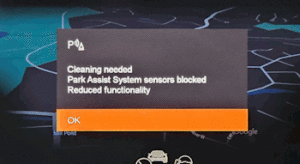Smart pilot assist These are Smart Pilot Assist indicator symbols. They are part of Mercedes-Benz Smart vehicles and are intimately connected to the Adaptive Cruise Control system. Smart pilot can control the vehicle speed according to the set vehicle speed and the inter-vehicle space, and assist steering wheel control according to the lane lines on …
Tag: warning
Permanent link to this article: https://dashboardsymbols.com/2025/09/cadillac-symbols-update-complete-adding-20-new-entries/
Permanent link to this article: https://dashboardsymbols.com/2025/07/smart-pilot-assist-indicators/
12-volt EV battery issue crops up again
12-volt EV battery #InsideEVs did a piece a day or two ago about someone who was locked out of their Tesla while on a road trip far from home. It turned out to be a dying 12-volt EV battery. Yes, you read that correctly — electric vehicles (EVs) still have a 12-volt start battery. It …
Permanent link to this article: https://dashboardsymbols.com/2025/06/12-volt-ev-battery-issue-crops-up-again/
Electric motor failure indicator
Electric motor This is an Electric Motor Failure Indicator symbol. The first explanation for this warning light is to alert the driver of a failure in the Electric Propulsion System, but first specifically notes the electric motor. There are additional systems with their own warnings. Before continuing, is one of these truly your symbol?? If …
Permanent link to this article: https://dashboardsymbols.com/2025/06/electric-motor-failure-indicator/
Has Skoda solved my issue with the charge system warning light?
Charge system warning Just a few months ago, I ran a piece that was essentially a complaint about the industry’s use of the charge system warning light. While it is made to look like a battery, the light “fails” to warn of a fault in the battery itself. In the piece, I recounted three instances …
Permanent link to this article: https://dashboardsymbols.com/2025/05/has-skoda-solved-my-issue-with-the-charge-system-warning-light/
At Last a Useful Warning on an Automotive Instrument Panel!
A Useful Warning! Today has been cold with light snow. Coupled with the salts dropped on the pavement, this made for very dirty spray all over everyone’s car, including mine. As a result, when I slowed to park the warning below was displayed in the center of my instrument panel… We have railed for years …
Permanent link to this article: https://dashboardsymbols.com/2024/01/at-last-a-useful-warning-on-an-automotive-instrument-panel/
Shift to Park Dashboard Warning
Shift to Park This is a Shift to Park Dashboard Warning symbol. The light will blink red and a chime will sound if the ignition switch is turned off while the vehicle is not in Park. Move the shift lever or touch the Park button to turn off the light. The chime will sound until …
Permanent link to this article: https://dashboardsymbols.com/2023/03/shit-to-park-warning/
- 1
- 2


Cadillac symbols update complete, adding 20 new entries
Cadillac symbols Our 2026 update of the Cadillac symbols page is complete and it is left just short of 100 entries, literally at 99. Twenty of the indicators are new to the company, nine of which are new to us. We also added a first red/yellow combination entry (left) with the electronic all wheel drive …
Continue reading